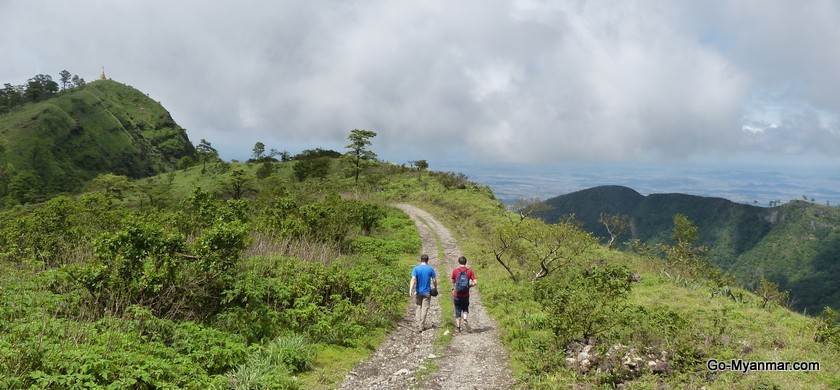There are many opportunities for hiking and cycling all around Myanmar, and most areas that are accessible to foreigners allow unrestricted movement for people to explore at their leisure. Below are some of the highlights and issues you need to bear in mind when travelling by foot or bicycle.
Hiking highlights
The relaxing hill stations of Kalaw, Pindaya and Hsipaw are famed for the walks you can take in the surrounding Shan hills, with beautiful views and chances to take in tribal village life (for a selection of photos of hill trekking in Shan State, go to our Flickr photo album). In the south of the country, you can hike up the sacred and monolithic Mount Zwegabin and, further off the beaten track, Mount Victoria in southern Chin State offers numerous longer-distance hiking opportunities, as well as culture and scenery that are entirely different to the rest of Myanmar.

Close to the temples of Bagan is the volcanic Mount Popa, which is a satisfying challenge to hike up and offers panoramic views of the Irrawaddy River and surrounding plains. And in the Himalayan far north, the area around Putao offers a range of activities, including long-distance treks and white water rafting, which can take from five to twelve days – or more. Special permits are required to visit these areas and you must be part of an organised tour – a serious amount of advanced planning is required, and it will not be cheap.
To find out about hiking and outward bound tours, go here.
Restrictions and hitchhiking
Although movement is generally unrestricted, travel in some border areas is not permitted and there are a very limited number of campsites in Myanmar. For these reasons, you should only attempt long-distance travel by foot with a local guide. Hitchhiking is not generally practised in Myanmar; the traditional hitchhiking sign might just be replied to with a smile or thumbs up, with the car passing by! However, you may sometimes get lucky.
Cycling in Myanmar
There are numerous cycling possibilities in Myanmar, particularly around localities such as Bagan, Kalaw, Yangon and Inle Lake – and dedicated cyclists are allowed to take their own bikes to the country over land, either on your own or as part of an organised cycling tour.
For serious touring cyclists, exploring Myanmar by bicycle is certainly possible – but, if you are not on an organized tour, caution is urged. If you take your own bike, spare parts are unlikely to be available (although locals will usually do their best to help), and you should not stray from the main travel areas.
There are checkpoints on many roads around the country, and sometimes you will be required to have photocopy of your passport photo page and visa. Although Myanmar is opening up fast, special permits are still required to enter some parts of the country.
For detailed regional maps of Myanmar, go to the Myanmar Information Management Unit website.







